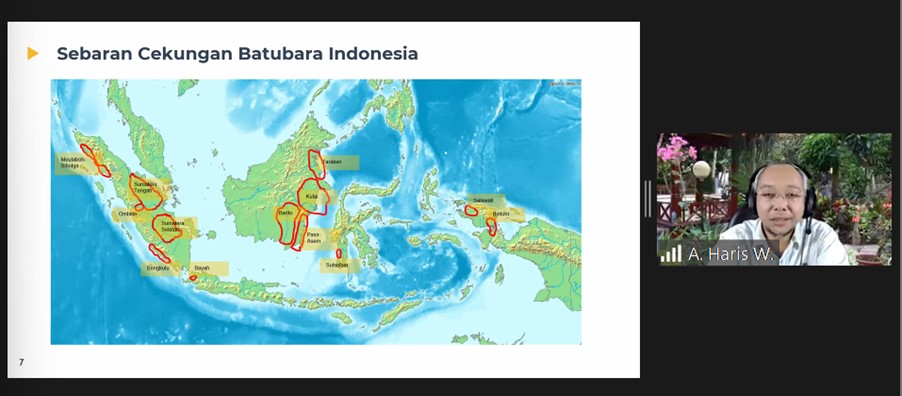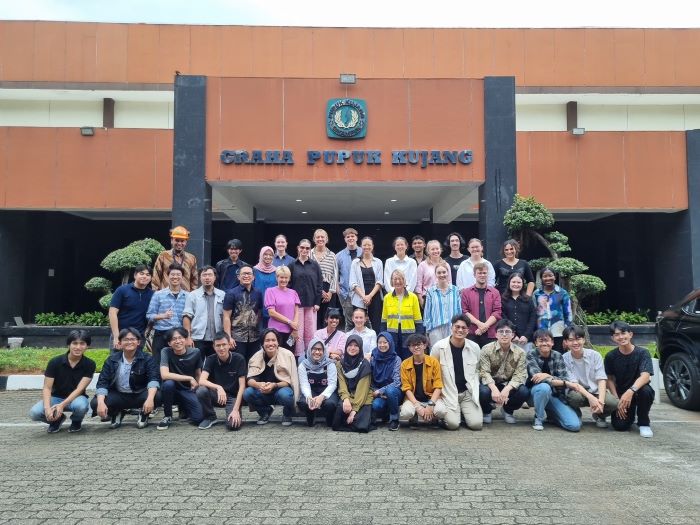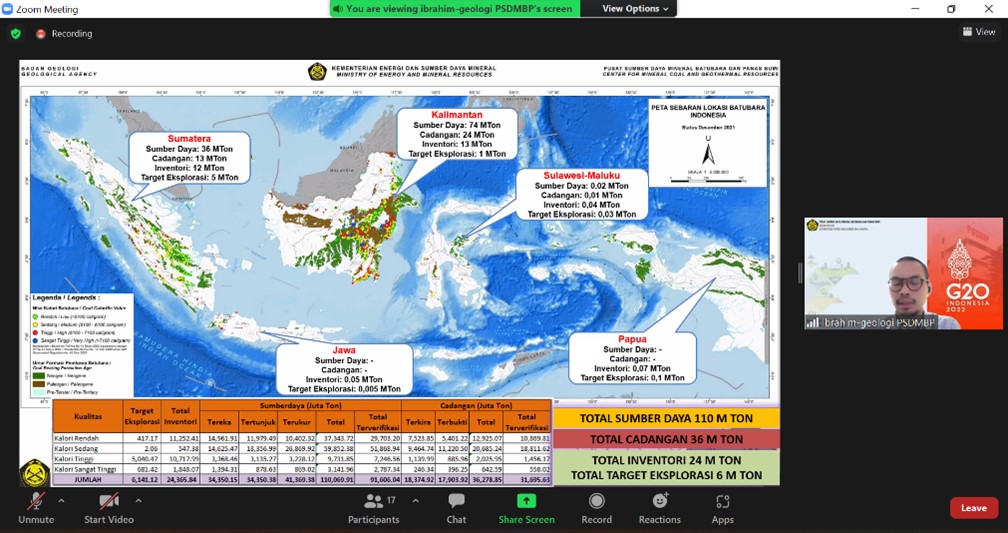Guest Lecture of ITB Chemical Engineering Study Program: Challenges in Indonesia's Coal Utilization to Achieve Net-Zero Emission

BANDUNG, itb.ac.id – The Chemical Engineering Study Program from ITB FIT (Faculty of Industrial Technology) held a guest lecture for TK4027 and TK5007 (Chemistry and Coal Technology) classes on Tuesday (22/2/2022). Titled "Challenges of Utilizing Coal in Indonesia to Reach Net-Zero Emission in 2060", the course was delivered by Dr.phil.nat. Agus Haris Widayat, S.T, M.T. from ITB FMPE’s (Faculty of Mining and Petroleum Engineering) Earth Resources Exploration Research Group.
Dr. Haris first described coal as organic, readily-combustible sedimentary rocks derived from plants and has colors ranging from brown to black. It undergoes both physical and chemical processes during its sedimentation that enrich its carbon content as time passes. Its formation consists of two main processes: biochemical and geochemical.
Coal formation began 35 million years ago in the Paleocene-Eocene period in which the extension regime in Indonesia occurred at the same time. Those eras made Indonesia a country rich in its resources. Many regions in the country become the center of coal distribution, such as Meulaboh, Sibolga, Ombilin, South Sumatra, Bengkulu, Bayah, Barito, and Kutai. Both Sumatra and Kalimantan Island own the most coal basins in the country. In total, Indonesia has approximately 144 billion tons of coal with 39 billion tons of its reserves.
Coal resources in Indonesia are divided into several categories: theoretical, estimated, indicated, and calculated. On another note, there are several levels of heat calories generated from the burning of coal, ranging from low, medium-low, medium-high, high, and very high. Coals with low-to-medium calorie levels are the most abundant in the country.

"Coals that are deposited near the sea or formed around the mountains generally have higher sulfur content,” Dr. Haris added. “Examples are those found at Barisan Hills and East Kalimantan basins.”
As the number one source of energy, coal rises as one of Indonesia's largest exports. Hence, the majority of mining industries are involved in the coal sector. Coal mining is performed in two ways. The first is the open-mining or open-pit method, whereas the latter is the underground mining method. Most mining activities done in Indonesia use the open-pit method.
Not only does coal dominate over other resources for acquiring conventional energy, but it is also the leading resource for the national power plant energy by 60%. Other forms of its utilization are found in the production of cement, steel, and coal briquettes.
Dr. Haris ended his discussion by listing the challenges faced by the coal sector to achieve the Net-Zero Emission target in 2060. "Aiming for a net-zero emission does not mean we have to eliminate the use of fossil energy; it can be accomplished by balancing the amount of carbon released with those absorbed. The challenges faced by the coal industries are quite tricky as coal is a huge contributor of carbon, NOx, and SOx emissions,” Dr. Haris mentioned.
Thus, it is necessary to create a more environmentally friendly utilization of coal. One of them is developing gasification technology that converts coal from solids into synthetic gasses. These gasses can be processed into various practical products such as chemicals, fertilizers, DME (dimethyl ether), or fuel gasses.
Reporter: Yoel Enrico Meiliano (Teknik Pangan, 2020)
Translator: Ruth Nathania (Teknik Lingkungan 2019)

scan for download







